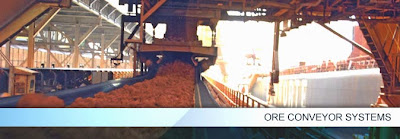The town of Kincardine
and some surrounding communities in Ontario Canada have provided their support to a proposal
to bury radioactive waste in an area near Lake Huron .
The waste is classified as "low-level" and is comprised of ashes from incinerated mop
heads, paper towels, floor sweepings, and other debris. It would also include "intermediate
waste" such as discarded parts from the reactor core. Most of the waste
would decay within 300 years, but some of the intermediate waste would stay
radioactive for more than 100,000 years.
According to the proposed scheme, the waste
would be placed in impermeable chambers drilled into sturdy limestone 2,230
feet below the surface, topped with a shale layer more than 600 feet thick.
The strongest opposition to the scheme
seems to be over the fact that the storage chambers are less than 1 mile
(1.6km) from Lake Huron, a source of drinking water for many US and Canadian
communities. The lake's maximum depth in the vicinity of the nuclear site is
about 590 feet. Opponents have contended that seeping groundwater would fill
the chamber in a short time, become contaminated, and eventually reach the lake
through tiny cracks in the rock. However, the radioactive material in question has
been stored above-ground since the late 1960's and needs a permanent resting
place.
Many individuals and communities have a
knee-jerk reaction to nuclear power which is sometimes based on misinformation.
Existing energy sources such as the oil and coal industries no doubt have
something to gain from suppressing the development of nuclear technology.
However, not all aspects of nuclear energy production are as bad as many people
perceive them to be.
See -
http://nextbigfuture.com/2013/11/carnival-of-nuclear-energy-184.html
http://www.hiroshimasyndrome.com/radiation-the-no-safe-level-myth.html
http://www.hiroshimasyndrome.com/environmentalists-for-nuclear-energy.html
http://nextbigfuture.com/2013/11/carnival-of-nuclear-energy-184.html
http://www.hiroshimasyndrome.com/radiation-the-no-safe-level-myth.html
http://www.hiroshimasyndrome.com/environmentalists-for-nuclear-energy.html
From the Chem.info website - http://www.chem.info/news/2013/11/nuclear-waste-burial-debate-rages-along-lake-huron#.UpihQ8RDvG5
-













